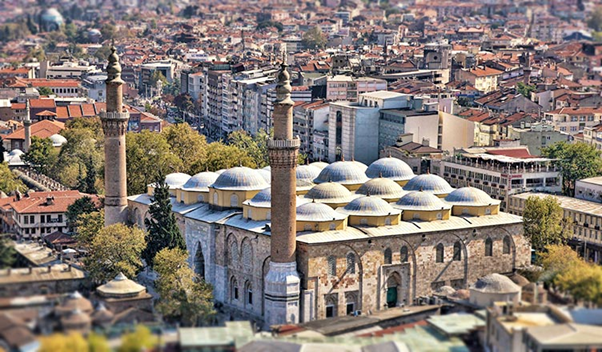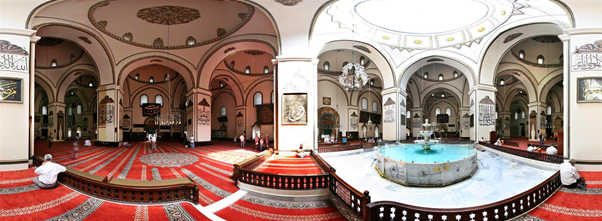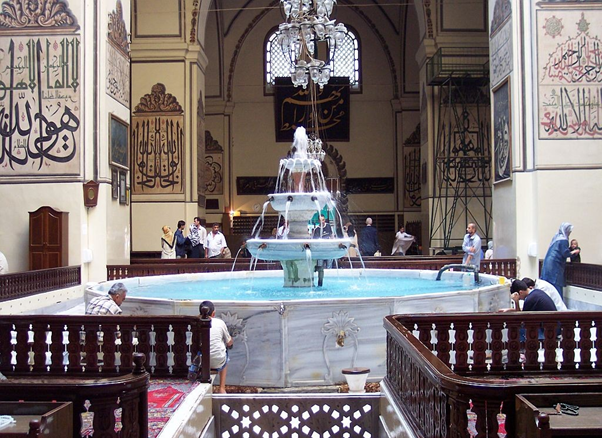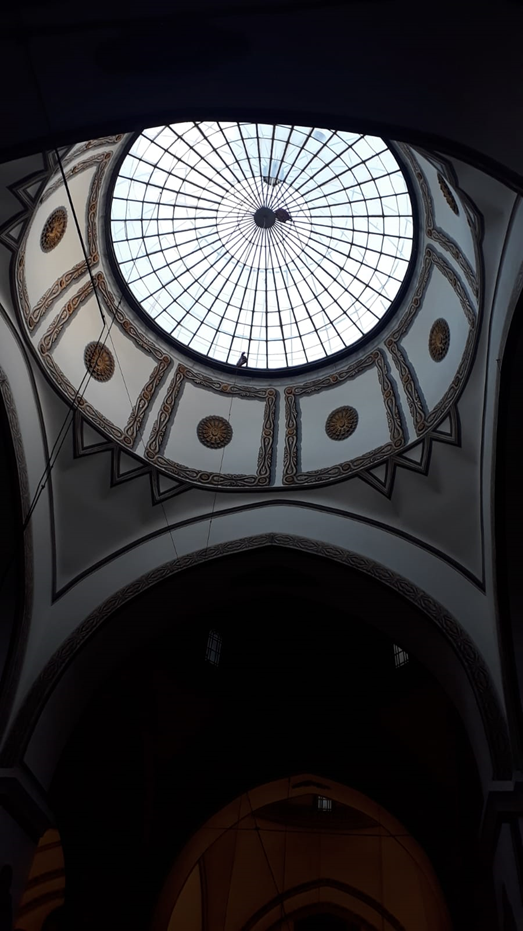Acoustic solution for mosques
Acoustic solution for mosques
Acoustic solution for mosques
The mosque as an important building type of Muslim architecture has evolved to meet Islamic needs. A variety of different worship activities happen within these multifunctional public spaces; these different users have different acoustical requirements. As in many other religions, worshippers sometimes need solitude while at other times they want to feel in absolute unity with the others present.
Mosque buildings typically contain an ornamental niche (mihrab) set into the wall that indicates the direction of Mecca (qiblah), ablution facilities and minarets from which calls to prayer are issued. The pulpit (minbar), from which the Friday sermon (khutba) is delivered, was in earlier times characteristic of the central city mosque, but has since become common in smaller mosques. Mosques typically have segregated spaces for men and women. This basic pattern of organization has assumed different forms depending on the region, period and denomination.
As shown, it can be understood how far and clear should sound be in mosque with the people crowded.
Acoustic solution for mosques should be found to fit both artistic structure and sound quality.
Whatever the used sound system is, there is always exist of parameters that negatively affect the performance of the sound, such as reverberation time, weak loudness, and noise problems.
Researchers found the acoustical properties of several Ottoman mosques designed by Mimar Sinan in the 16th century.
The technology applied to understand his solutions for Acoustical problems. The acoustical systems were the production of long-term estimations and design, and also proved the abundance of his knowledge and applied technology on acoustics.
The analysis of plans and sections geometry showed that the mosques were designed so that the sound energy would diffuse homogeneously in the rooms, which is also a starting point of today’s room acoustics.
such that;
- They avoided using regular forms like a perfect square or cube, and used niches, buttresses, galleries, etc. to break regularity he even designed regular forms.
- In a rectangular room oblique eigen frequencies are seen on the axis of diagonal corners. The use of stalactites at the corners disperses the reflected sound energy which avoids the standing waves.
- Dissipative forms were given to all structural elements to disperse the reflected sound energy.
- Special care to the dome to prevent reflections from the dome which would cause eco and prolongation especially at low frequencies.
Turkey, and especially Bursa is a city crowded by old and unique mosques because of its history. However, two of the huge and unique architectural designed mosques are GRAND MOSQUE (ulu camii) and an ORNAMEMTAL NICHE MOSEQUE (mihraplı camii).
As an example of Acoustic solution for mosques the grand mosque, it is the largest mosque in Bursa from early Ottoman architecture. the mosque was designed as a large rectangular building, with twenty domes arranged in four rows of five that are supported by twelve columns and two minarets. These twenty domes as we all know has a shape of semi-sphere that plays an important role in the acoustical field in the mosque, which is one of the Acoustic solution for mosques where the concave shape of the dome helps in effectively doubling the sound in the space when the walls are reflecting the sound many times , Because of this the reflected sound energy from the dome reaches back to the room with a time delay. So, the result is echoes or noise in the room and reduction on the percentage of intelligibility. also, this sound reflections are more in the large domes and this is the reason that mosques have at least one big dome. And, the sound coming from the dome shortly after the direct sound, creates a divine effect in the atmosphere of worship. It is believed that this application became a tradition in Ottoman mosques.
There is also a fountain inside the mosque where worshipers can perform ritual ablutions before prayer; the dome over the fountain is capped by a skylight which creates a soft light below, playing an important role in the illumination of the large building.
Acoustic solution for mosques steps that Acoustima® acoustic panel by Seatup Turkey® do, included:
– Analysis: initially our experts visit the mosque and carry out a consultation.
– Design: recommending products which suit location, shape, size, and properties of the place, in addition, simulate the concept to close it to the real.
– Production: where idea becomes physical.
– Installation: the final step.
The decay of sound energy:
After having diffused sound field in a room, the optimum reverberation time must be realized to get sufficient intelligibility. For this purpose the sound energy decay is controlled with absorption at the surfaces of the room boundaries and the elements in the room. It is seen by the investigation that excessive sound energy is absorbed by the surfaces and the elements in the mosques. These are typical examples of acoustical systems; like minbars and balcony parapets made of carved marble (perforated plates). There are three specifically which are seen as more important on the controlling of the sound energy decay. Those are:
- Plaster: basically, used for sound absorption. By addition of tow, which give a spring affect, the system works like a panel resonator efficient at low frequencies. The change on mass and stiffness of the system depending on necessary absorption were also seen. In general, the plasters at the domes were more damped than those used at walls.
- To prevent standing waves, caused by eigen frequencies, terracotta (earthenware) vessels were used as cavity resonators. In general they were used in the domes with openings through the inside, and great numbers of them were seen. The cavity resonators are one of the systems in acoustics with dimensions less than the wavelength of sound. They have a scattering and absorption effect on incident sound.
- The third element is carpet floor coverings. While the reverberation times of empty rooms are in acceptable limits, fully occupied mosques give perfect result. It proves that the effect of congregations on acoustics has been calculated, and to reduce the effect of congregation absence the floors were finished with carpet, which is also one of the principles in acoustics today.
It must be mentioned that, the element said above have other functions than acoustics, like static and aesthetics. They superposed static, acoustics and aesthetics in his mosques which explains his greatness in the history of architecture.
The acoustical systems, treatments and reverberation time curves prove that acoustical performances of the mosques were planned before construction. It had been able to realize the optimum acoustical performances for different planning geometry and finishing materials, which also proves that these performances were results of detailed estimations and design. Used acoustical systems are highly developed and need extensive knowledge and technology. On the other hand, extension of the spectrum of the research become necessary with the increase of subjected mosques and also including sound distribution and intelligibility measurements in research program.
As one of the Acoustic solution for mosques that Acoustima® acoustic panel by Seatup Turkey® offers to have a mosque acoustically designed just like the old Ottoman mosques is adding a rock wool acoustic panels on the walls or also wooden panels in addition to carpet which is the main part in the mosque.
As a summery; Acoustima® acoustic panel by Seatup Turkey® can help you in different, modern, and acoustically designed mosque. Also, you can see our online catalogue:
SeatUp Turkey® & Acoustima®
+902249996707 +905427196712
www.seatupturkey.com.tr / www.seatupturkey.net





